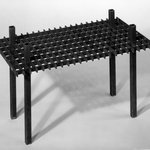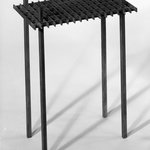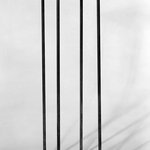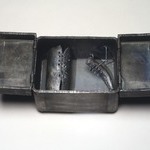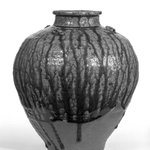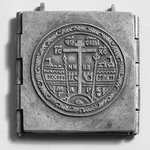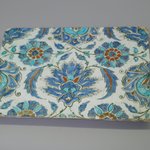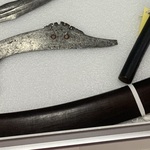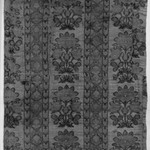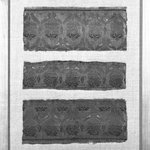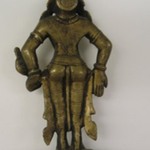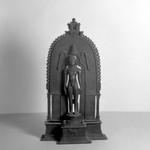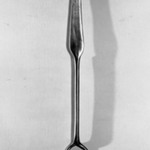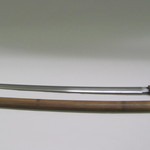Battle-Axe with Dragon Head
Arts of the Islamic World
Shared motifs and designs in the art of diverse cultures along the Silk Route
provide some of the most visible evidence of cultural transmission between
China and the Islamic world. Through trade, tribute, gift exchange, and the
spread of religions such as Buddhism, Manichaeism, Judaism, Christianity,
and Islam, imagery associated with one artistic tradition was often adapted
or incorporated in another cultural context. Motifs that appear across the arts
of China, Central Asia, and the Islamic world include fantastical animals such
as dragons and phoenixes; cloud bands and cloud collar motifs; and flowers
such as lotuses and peonies. Yet the meanings linked to these motifs often
did not transfer from one context to the next. Similar imagery could exist
simultaneously in several regions while signifying different things.
The dragon represents one of the enduring motifs of Chinese art; it has
acquired a range of auspicious meanings over time, symbolizing creation,
life-giving rain, and the benevolent power of the emperor.
Dragons were also familiar to Iranian, Anatolian, Central Asian, and Indian
cultures and were represented as peaceful and benevolent or terrifying and
violent depending on Manichaean, Soghdian, Khotanese, or Armenian mythology. The dragon decorating the back of an Ottoman axe might have
served as a fear-inducing and simultaneously protective image.
MEDIUM
Steel
DATES
17th–18th century
PERIOD
Ottoman Period
DIMENSIONS
31 in. (78.7 cm)
Other (Blade): 8 1/2 in. (21.6 cm)
(show scale)
ACCESSION NUMBER
42.245.5
CREDIT LINE
Gift of Percy C. Madeira, Jr.
MUSEUM LOCATION
This item is not on view
CAPTION
Battle-Axe with Dragon Head, 17th–18th century. Steel, 31 in. (78.7 cm). Brooklyn Museum, Gift of Percy C. Madeira, Jr., 42.245.5. Creative Commons-BY (Photo: Brooklyn Museum, 42.245.5_bw.jpg)
IMAGE
overall, 42.245.5_bw.jpg. Brooklyn Museum photograph
"CUR" at the beginning of an image file name means that the image was created by a curatorial staff member. These study images may be digital point-and-shoot photographs, when we don\'t yet have high-quality studio photography, or they may be scans of older negatives, slides, or photographic prints, providing historical documentation of the object.
RIGHTS STATEMENT
Creative Commons-BY
You may download and use Brooklyn Museum images of this three-dimensional work in accordance with a
Creative Commons license. Fair use, as understood under the United States Copyright Act, may also apply.
Please include caption information from this page and credit the Brooklyn Museum. If you need a high resolution file, please fill out our online
application form (charges apply).
For further information about copyright, we recommend resources at the
United States Library of Congress,
Cornell University,
Copyright and Cultural Institutions: Guidelines for U.S. Libraries, Archives, and Museums, and
Copyright Watch.
For more information about the Museum's rights project, including how rights types are assigned, please see our
blog posts on copyright.
If you have any information regarding this work and rights to it, please contact
copyright@brooklynmuseum.org.
RECORD COMPLETENESS
Not every record you will find here is complete. More information is available for some works than for others, and some entries have been updated more recently. Records are frequently reviewed and revised, and
we welcome any additional information you might have.


